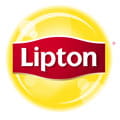Track Your Sodium

A fast-food sandwich or burger can easily contain more than 100% of the sodium you need in a day. Most Americans take in way more sodium than our hearts can handle.
Most people consume about 3,400 milligrams of sodium a day — more than twice the sodium intake recommended by the American Heart Association.
It’s easy to understand why — sodium is just about everywhere in our food supply, especially in soups, sandwiches, cold cuts, cured meats, pizza, poultry, and breads or rolls. Sodium is an essential nutrient, but you don’t need much in your diet at all. Sodium can pile up quickly just from eating a sandwich. For example, two slices of bread (290 mg of sodium) and a serving of turkey cold cuts (1,050 mg of sodium) busts the daily sodium budget for most people.
The High Blood Pressure Link
About half of all Americans have high blood pressure, also known as hypertension, and a high-sodium diet may be to blame. In some people, sodium increases blood pressure because it holds excess fluid in the body, creating an added burden on your heart. Too much sodium also increases your risk for stroke, heart failure, osteoporosis, stomach cancer and kidney disease.
Unfortunately, many people have high blood pressure and don’t know it. Most of the time, there are no symptoms, which is why it’s called the “silent killer.” But when high blood pressure goes untreated, it damages arteries and vital organs throughout the body.
 Use the Sodium Tracker
Use the Sodium Tracker
The sodium tracker (PDF) is an easy way to keep tabs on how much sodium you’re getting in your diet. Just jot down what you eat — that blueberry muffin for breakfast or the garlic bread with last night’s spaghetti — and the amount of sodium each food contains. Remember: Sodium levels vary in the same foods depending on the brand or restaurant.
At the end of the day add up the total amount of sodium you consumed. This exercise can help you make better choices if needed. Sometimes a small adjustment can bring big results when it comes to your health! The American Heart Association has lots of resources to help you stay on track.
Tips to Reduce Sodium:
- Check the nutrition labels on prepared and packaged foods, because over 70% of the sodium we consume is hidden in processed foods. Look for the words “soda” and “sodium” and the symbol “Na” on labels, which means that additional sodium sources are present.
- When making or ordering pizza, use or request very little and/or low-sodium cheese. You might even enjoy cheeseless pizza topped with chicken and loaded with veggies.
- Use fresh, skinless poultry that isn’t enhanced with sodium solution instead of fried or processed chicken.
- Select soups that are lower-sodium varieties.
- Make sandwiches with low-fat, low-sodium cheeses, and try to limit sodium-laden condiments. Avoid processed red meats, cured or smoked meats and other salty processed foods.
- Choose foods with potassium to counter the effects of sodium. It may help lower your blood pressure.
- Try some tasty recipes that are lower in sodium and big on flavor.








